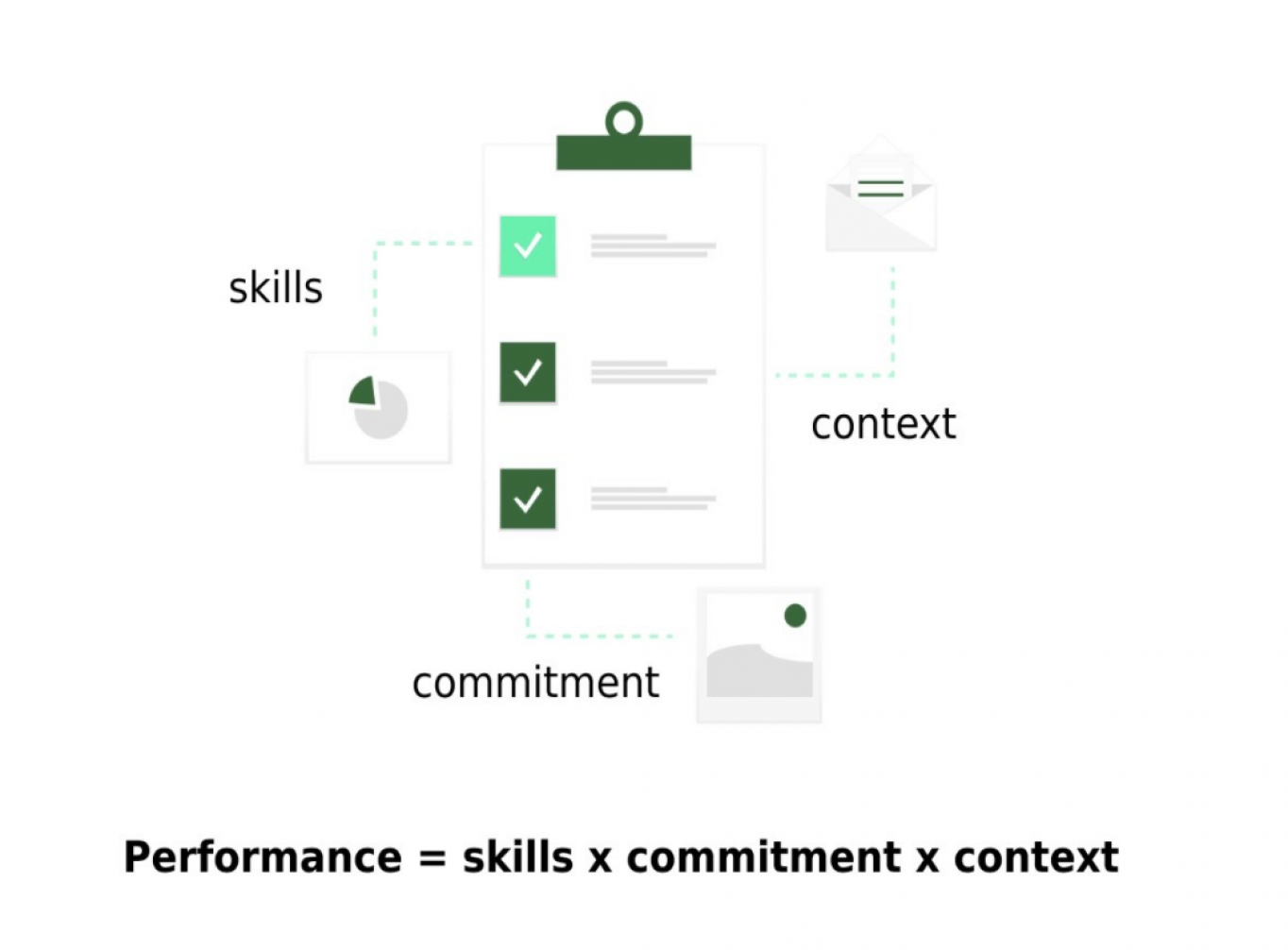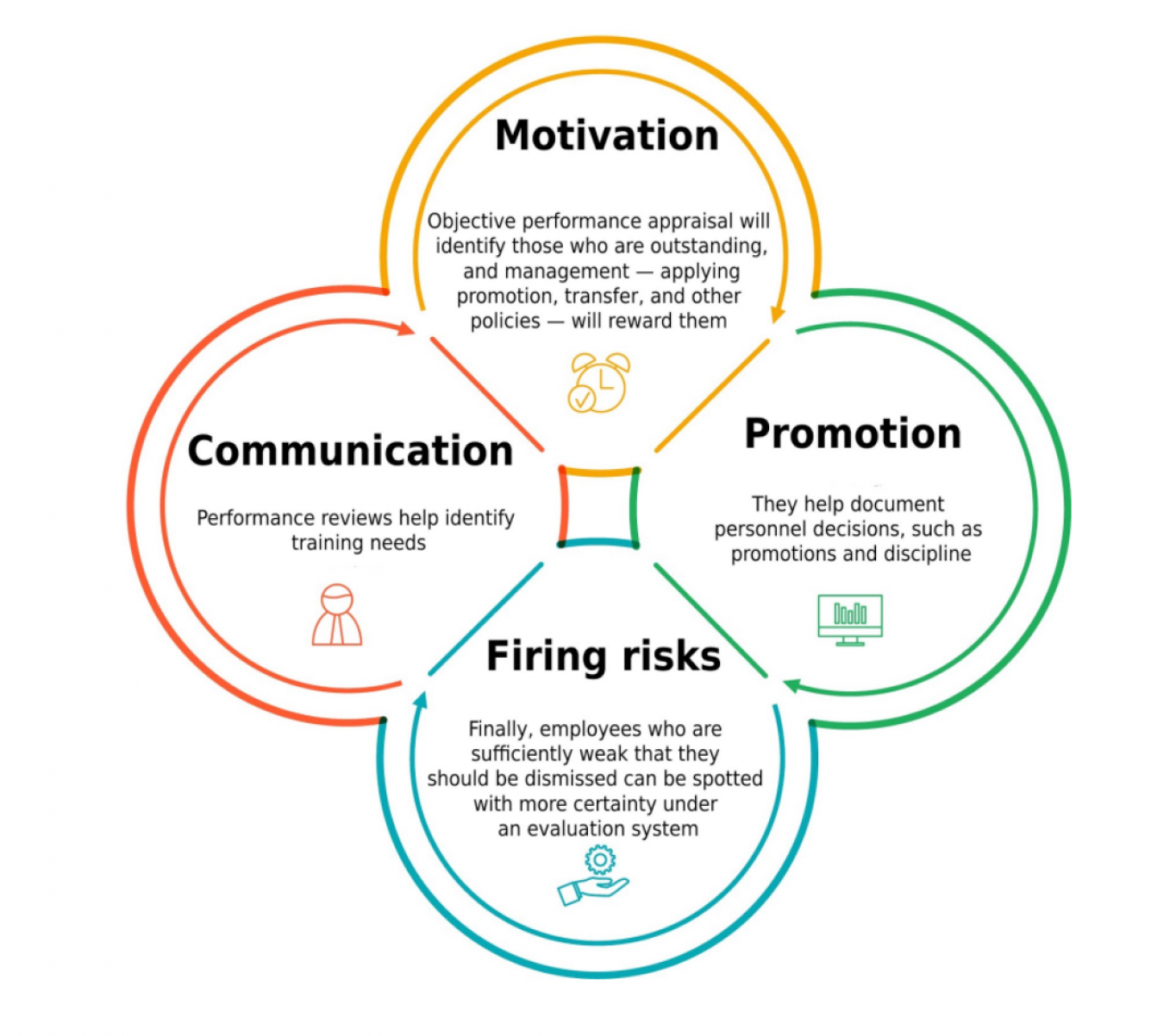At the end of the year, it will be that time again: In many companies, managers and employees get together for the feedback review to discuss successes, goals achieved, and new tasks. Some employees are happy to receive the recognition they deserve from their superiors. Others feel like they have been shown up in their performance reviews and fear an unjustified judgment. Many companies conduct employee performance appraisals at the end of the year, and HR managers have many tasks and meetings. We have six tips for the performance appraisal and challenge the traditional process.
As a rule, their supervisor’s employees are assessed by their supervisor in a personal interview once a year. This performance appraisal primarily provides feedback for the employee. Strengths and weaknesses can be identified, and work results can be assessed. Thus the performance appraisal is part of the personnel appraisal alongside the potential review.
How can you design your performance reviews so that they are not just conducted as a compulsory exercise but bring real added value for employees and employers? We'll show you in this article.
What favors high performance? Money? Not at all. Expressed in a formula:

Why are performance appraisals necessary?
The performance appraisal is an instrument for controlling and assessing performance criteria and behavior of employees.
Companies use structured assessment processes to identify their top performers and also uncover performance gaps. Performance reviews are also a critical information basis for further talent management decisions, for example, in compensation or succession planning. Often, within the performance appraisal, the achievement of targets from the annual target agreement is assessed. In many companies, these assessments conduct once a year, e., as part of an employee interview, carried out and recorded in writing. Faster working environments and agile forms of organization increasingly lead to shorter assessment cycles.
Who does the performance evaluation? As a rule, the performance appraisal conduct by the manager. Besides, colleagues and customers include 360-degree feedback. It is also common for employees to first assess themselves as part of a self-assessment. It allows employees to reflect on their work and compare their self-image with others’ images.
While HR defined the strategic process in advance, the HR department monitors the compliant implementation during the performance appraisal. An important point here is the control of the calibration of the assessments. For this purpose, the same level managers meet to compare their team members’ estimates and, if necessary, adjust them based on this.
The basis of effective performance management is, therefore, the definition of goals. Several levels of performance must include to optimize corporate performance:
- Individual employee performance
- Team performance
- Performance across the department
- Performance management is, therefore, a multidimensional approach.
The role of the human resources department
The line manager usually carries out a performance appraisal. First HR department does some essential preparatory work. It gives the impetus for carrying out assessments. Standardized templates and evaluation tools required for this make the assessment process as transparent and understandable as possible. Possible assessment criteria are work quality, diligence, work results, independence, ability to work in a team, or technical knowledge.
When evaluating individual employees, managers can use example cases to guide and classify the criteria using a clearly defined scheme. After the assessment, the HR department collates the results and stores them in the employee's personnel file. Possible consequences are bonus payments or even salary increases, promotion and training, and reminders or terminations.
Strategic advantages of performance appraisals
Performance evaluations and reviews are a necessary element of collaboration; performance appraisal has many advantages and disadvantages. Usually, these take place in the form of appraisal interviews between superiors and employees, and often the dimension of the team and its internal dynamics are neglected. Instead, rumors quickly develop, and team members exchange ideas individually in the background. Here are five key advantages of performance appraisal; let’s discuss them in detail.
Key Performance Indicators
Key performance indicators are measurable values that show how effectively people involved in business achieve their most important business goals. They are used in many different areas and allow us to evaluate the effectiveness of business activities. They allow you to limit a large amount of information to the most needed data, which gives the best picture of achieving your goals. KPIs are specific to a given company, a particular position, and will vary depending on its characteristics, industry, company size, or operating strategy.
Performance appraisal strengths and weaknesses help distinguish the motivation, and satisfying their needs comes down to implementing micro-entrepreneurship in the organization. Key Performance Indicators are a tool enabling the implementation of the turquoise management style. The KPIs are tools that allow you to monitor your progress and are the basis for introducing improvements.
Measuring hard and soft skills
One of the most popular and most frequently used methods of measuring competencies are tests. They allow you to assess both hard and soft skills quickly. Their advantage is the possibility of checking more people simultaneously, high reliability, and ease of verification. They are often a starting point for further analysis. It is worth bearing in mind that they provide the most reliable results in combination with other methods.
Another well-known way to verify the abilities of employee reviews is through interviews. They allow you to check the professional experience and how he or she could cope in specific situations.
Core values
The concept of core values understands a deliberately selected set of elements and relations between them to improve human resource management’s effectiveness in achieving a given organization’s goals and mission. The essential features of the employee evaluation system include: assessment purposes, rules of its application, the subject and object of assessment; evaluation criteria; assessment methods, and techniques. It is the most appropriate and effective way to correct and perpetuate the desired way people function in the enterprise and reflect on a given employee’s suitability to perform specific functions.
S.M.A.R.T Goal planning
SMART is a set of criteria for selecting goals that will help your team members increase the chances of achieving their goals. Supporting the team in setting and achieving the purpose is one of the best ways to keep employees motivated, provide ongoing feedback in the company's evaluation, and support the team to establish the team's assessment against its strategy. Everything you need to know about the SMART options is in our comprehensive guide, starting at the end of SMART.
Company Feedback
Feedback is an essential element of every process in the organization. It allows you to assess whether the actions taken have ended as planned. The lack of feedback does not allow the input data to be corrected in the next iteration of its improvement. It is any information of an opinion or evaluation nature, usually obtained from another person. Information systems can also be a source of feedback. In organizations, its primary goal is to increase the efficiency of the decision-making process.
Distributed leadership
Implementing distributed leadership as a management principle is the foundation for a participatory culture with honest feedback in all directions. It means spreading management tasks within the team based on different roles, rather than placing everything with the team leader. You can distribute tasks such as the organization and moderation of meetings, controlling and budget management (for the team), or roles such as technical experts or cultural guardians to various members in a self-controlled process. In this way, everyone becomes jointly responsible for the results of the team as a whole. The resulting working pattern supports the development of mutual trust, which forms the basis for strengthening discussions about contributions and consequences.
Benefits of performance appraisal
Every manager assesses their employees, but employees must find out how their performance and behavior are received. It is precisely for this reason that performance appraisal discussions should also be carried out at regular intervals and the typical employee appraisals because - performance appraisals are one of the main tasks of managers.
What benefits can the company still gain from regular performance reviews?
The benefit of regular assessments is that ineffective employees can be identified promptly;
Hear employee feedback on the strengths/weaknesses of the company's work processes;
To strengthen the connection with the most significant (profitable) team members and timely assess their ownership in its Self-review development;
The performance appraisal aligns the employees with the company's goals and strategies - the performance appraisal is when the employee and the superior discuss joint work;
Through the performance appraisal, different instruments of personnel development, such as training courses;
Employees receive feedback on their actions and behavior, which is an essential factor in employee motivation.
Only a combination of the various criteria leads to a meaningful performance evaluation; it is still crucial that the workplace’s performance criteria determine.
Key benefits for company and employee:
- the goal must be measurable;
- short planning cycles (month / quarter / year);
- simplicity. In modern companies, goals can revise very often in response to market changes. The planning process should be as easy and fast as possible;
- transparency. OKRs of the company/teams/employees are publicly available within the company;
- goal setting. About 60% of the goals are set by teams independently, based on the general objectives of the company;
- regular cross-team synchronization. For example, short, weekly stand-ups between teams;
- a management tool, not an assessment. Completing OKRs alone does not affect Performance Review results. It is one of the data sources that give an idea of an employee's work quality.
Individual elements are selected at the workplace and used to assess performance. Target agreements, on the other hand, open up the possibility of determining employees individually. At the same time, they are a control instrument for managers through the defined performance expectations. It makes a meaningful comparison of the target and the actual situation possible based on the set goals and the performance results.
Institutionalized employee appraisals usually have a certain period as the conversation’s focus and should be carried out regularly. Since executives enter into an active exchange with several employees, this puts a lot of strain on them.
An evaluation sheet recommends to form the framework of the institutionalized employee appraisal and a discussion guide. So no relevant points are forgotten. The main reason for such a conversation is to ensure that managers and employees pull in the same direction.
Reasons for the dispute can be the following:
- Target agreement and control, employee evaluation
- Planning and control of personnel development measures
- General career planning
- Performance and behavior assessment
- General idea monitoring
- General feedback

Benefits of Performance Review for the employee:
- The employee understands what he is doing well and what he can improve.
- The employee’s benefits of actions with its broad goals are shared vision and development strategy.
- Understanding and transparency for the employee, what are the expectations from his work.

Benefits of Performance Review for managers:
- Managers can successfully identify the most effective and promising employees.
- Managers can identify problems earlier and solve them before they become too significant - Managers can effectively communicate expectations, relying on specifics.
- Managers can encourage the development and growth and promote their involvement in the work company.
Ideally, based on the results of this event, the company will receive:
- analysis of the performance of employees in the context of the effectiveness of the unit,
- knowledge of the strengths and development areas of employees,
- analysis of the degree of employee motivation: motivated employees who are ready to work and develop.
If performance appraisal regularly conducts for all company divisions, it is possible to identify effective and ineffective divisions or functions within divisions. As a result, changes in the organizational structure or part of the functionality.
Why is a performance management system necessary for an organization?
Let's now go back to the Performance Review. No matter how good people work in a company, the larger it gets, the more complex interaction becomes. If we represent any company in a model, we will contact such a branched structure when many conditional arrows go from one part to another. The larger the company, the more of these arrows and the more losses on these arrows - on interaction, communication. Focus specifically on the analysis of the process itself, mentioning motivation for its implementation only at the very beginning. Let me briefly go over the main advantages that a company can receive from a performance review:
- Evaluate employees' results and performance, taking into account everyone’s opinions with whom they interact.
- Transparent both for management and for the employees themselves.
- Collecting feedback and delivering it to the employee became mandatory and regular, which immensely helped develop many.
- Develop a culture of open feedback, which sometimes goes beyond performance review.
- People can openly discuss their conflicts, praise each other promptly.
- Self-review turned out to be a cool tool for self-reflection, which was previously neglected by many.
The main point that we want to convey in this article is that you do not need to build a spaceship from the very beginning. If your team needs a performance review, start with the most straightforward option. Then collect feedback, analyze the data, and do some experiments to improve the process. And so, moving iteratively, you can get a better approach over and over again, explicitly tailored to your team and culture. Well, if those practices and insights that we shared today help you, it will be very cool!
Final Thoughts
The existence of a performance appraisal system does not have a motivating effect on managers and employees. If the performance appraisal process is an objective, transparent, understandable, and valued manner, it can become a management tool valued by everyone in the long term. Brainy HR can help you to measure your performance review. It can help to build and strengthen a stable relationship of trust between the manager and their employees. Regular short feedback discussions spread over the year are preferable to a single annual debate.


 Posted on Jan 26, 2021 by Anna
Posted on Jan 26, 2021 by Anna


